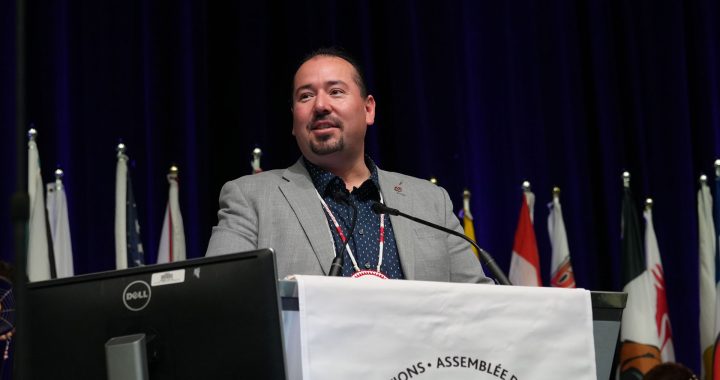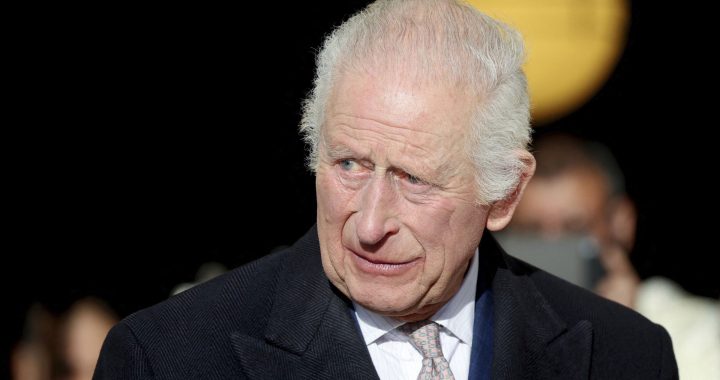The Yellowknives Dene First Nation (YKDFN) in the Northwest Territories have been on a healing journey for the last 70 years – ever since their traditional homelands were contaminated with highly dangerous arsenic trioxide from gold mining operations.
Members of the First Nation gathered on Dec. 2, for a feeding of the fire ceremony and prayer songs led by Yellowknives Dene Drummers.
Many held handmade signs that read “Respect the Treaties,” “#Giant Mine Monsters” and “Right this Wrong.”
YKDFN leaders and staff addressed a large crowd and called on the Canadian government to provide an apology, compensation and room for the First Nation to take the lead role in the remediation of the land and water.
“Our land is spoiled. It’s not like what it was,” said Dettah Chief Edward Sangris, who spoke of the fear his people have for harvesting food in the immediate area.
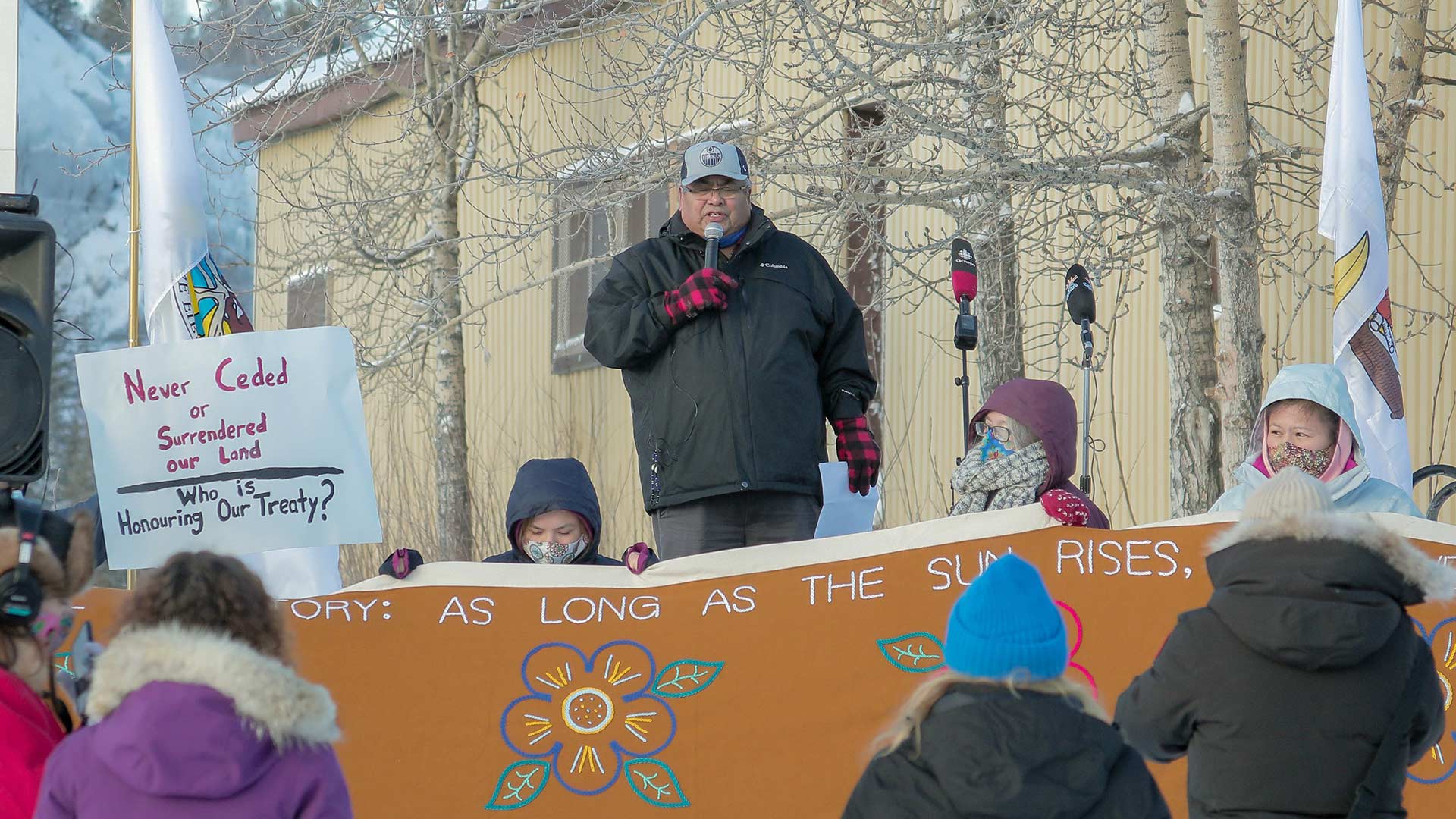
When the lands and waters were contaminated, Yellowknives Dene endured displacement from areas of great cultural and spiritual importance such as the western part of Yellowknife Bay, a place traditionally used for harvesting.
Sangris noted the lack of consultation Indigenous Peoples had in the development and operation of the mine.
“This area was once part of Yellowknife Dene Reserve. The government has set aside this area for the exclusive use of the Indigenous people in 1923. But They chipped away at it to make way for industry, for the mines such as giant mine,” Sangris said
On Nov. 16, YKDFN submitted a letter to Ottawa containing the historical evidence on the legacy of giant mine and outlining their requests.
While they have not received a formal response as of yet, with clean-up work set to begin in 2022 there is much unfinished business.
Matthew Spence, a regional director with Crown-Indigenous Relations and Northern Affairs Canada (CIRNAC) attended the demonstration and told APTN News he saw a community that has done a great deal of research into the historical legacy of giant.
“They felt like they had a strong case and they were putting that case to the public,” Spence said.
Read More:
Dene asking if they’re benefiting from Giant Mine clean up
Giant Mine Remediation Project
Three years ago, under the leadership of CIRNAC Minister Carolyn Bennett, Spence began working with the Yellowknives to support them in their to do their archival research.
He explained how the Canadian government created what’s known as the “Recognition of Indigenous Rights and Self Determination tables,” a place to negotiate a mutually acceptable outcome to a particular issue.
Spence acknowledged those processes take time.
“The first step would be getting a table and second step would be negotiating at the table, we are hoping to get the first step done,” he said.
For Sangris, time is of the essence.
“Many Elders who lived through the early years of Giant who saw their way of life drastically change passed away without receiving the apology from Canada that they longed for,” he said.
Johanne Black, director of treaty. rights and governance said her First Nations is at a “cross roads” in their relationship with Canada.
“They took the gold out of the ground and gave us nothing. Now they put the arsenic in to the ground and give us nothing. What new monster will they unleash on us now,” she said.
As YKDFN negotiates a comprehensive land claim agreement within the Akaitcho asserted territory, Black noted the First Nations are also asking to negotiate for damaged caused by Giant mine in a separate table.
YKDFN has been taking steps to educate the public on the historic wrongs and launched a website GiantMineMonster.ca.
It outlines the history of Giant Mine with the First Nations and allows visitors to participate in a petition to the Canadian government to meet the requests of YKDFN.
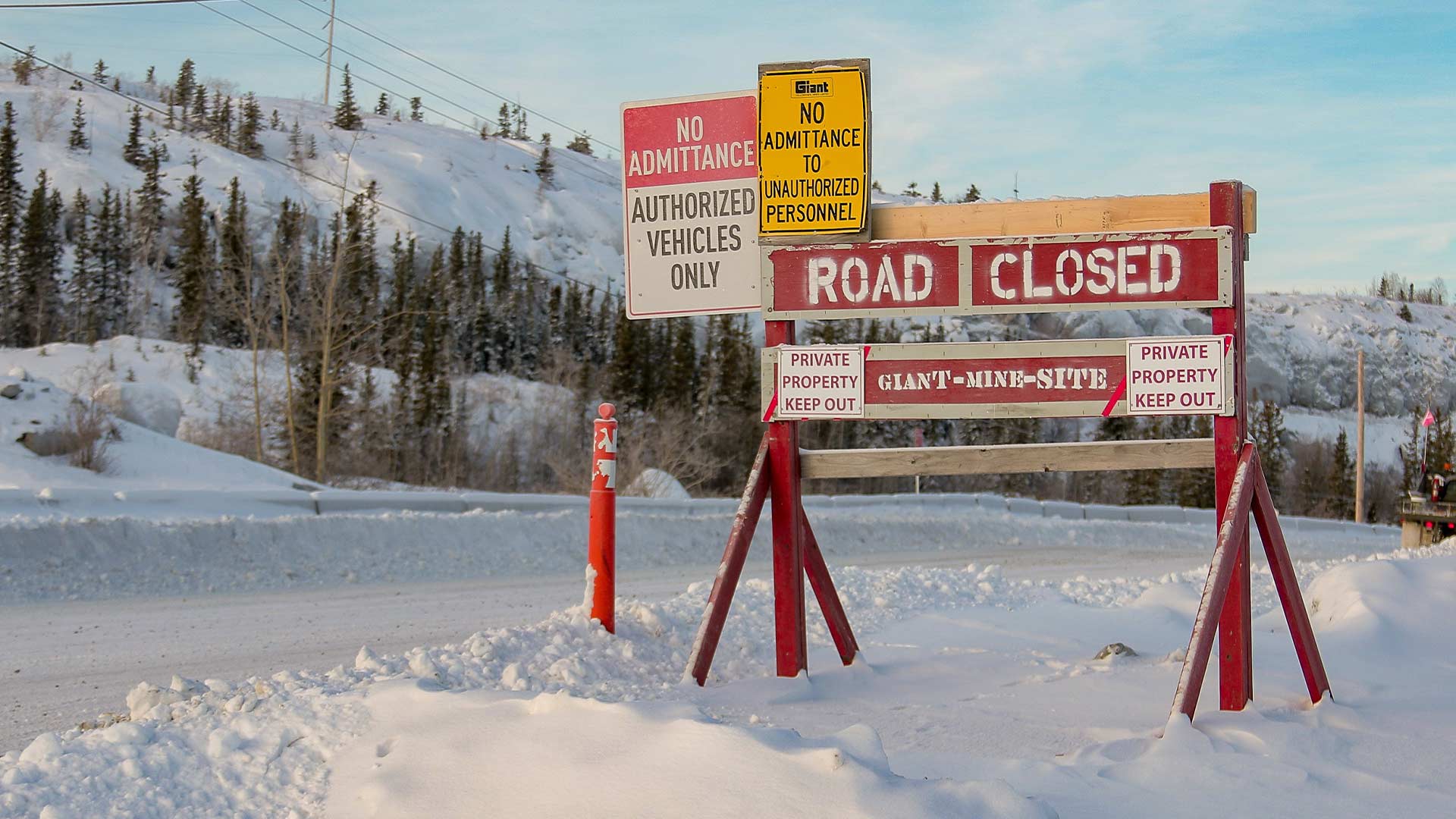
Giant Mine began operations in 1948, and with it produced toxic arsenic trioxide dust as part of its processing.
The dust settled in the Yellowknives Dene community of N’Dilo across the bay from the mine.
Despite Canada’s knowledge of the poisonous emissions, it wasn’t until 1951 that any emissions equipment was installed to control pollution. By that time many dene community members reported illnesses and a two-year-old boy died from eating contaminated snow.
“It still haunts our communities in the social effects that spiraled out in the contamination of our land. Food insecurity, displacement, intergenerational poverty, loss of meaning, despair, alcoholism, misery, homelessness, suicide, this is Giant Mine’s toxic legacy,” Black said.
The First Nation is requesting a contract similar to the Mi’kmaq agreement for the remediation of the Sydney Tar Ponds in Nova Scotia.
Jason Snaggs, chief executive of the First Nation, said a president has already been set as contract have been and will be awarded to the south and how some of these companies have shown no interest in engaging Indigenous communities.
“We are concerned that the industry day held in October simply furthered the opportunity for nonlocal companies to benefit from economic benefit opportunities that should rightly go to those most negatively affected by the historic injustice – The Yellowknives Dene.”
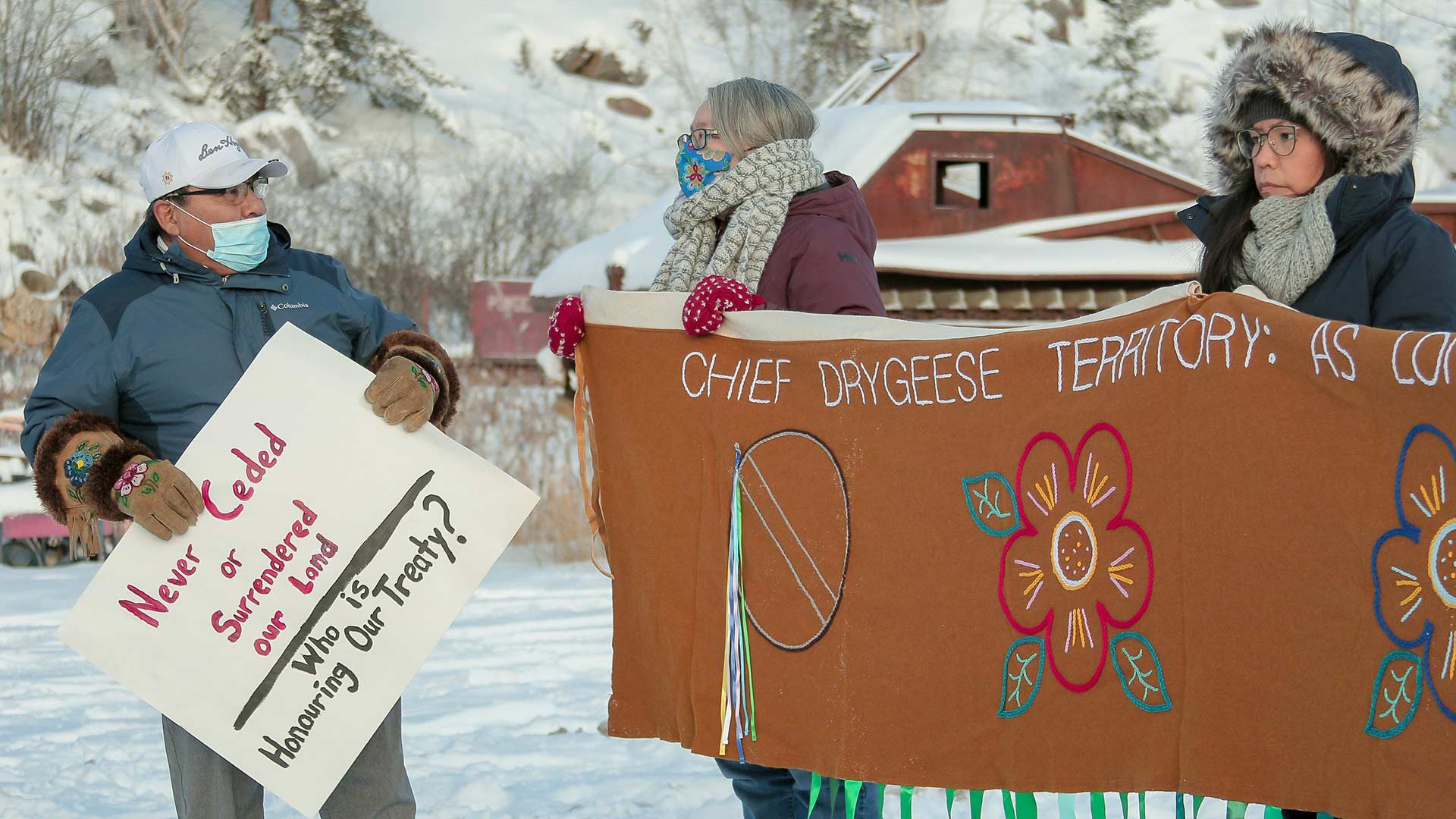
YKDFN has asked Ottawa for guaranteed economic benefits and contract arrangements that would make them the sole bidder for jobs that include water treatment, long-term environmental consulting and monitoring of the project and communication of monitoring.
N’Dilo Chief, Ernest Betsina spoke of how his people are ones best-placed to heal the land and cited TRC section 92 which asks corporate sectors and leadership to adopt the United Nations Declaration on the Rights of Indigenous People.
“We call on the government of Canada to come to the table to ensure that many decades of this toxic legacy that the Yellowknives Dene will benefit from the cleanup of this land.”




